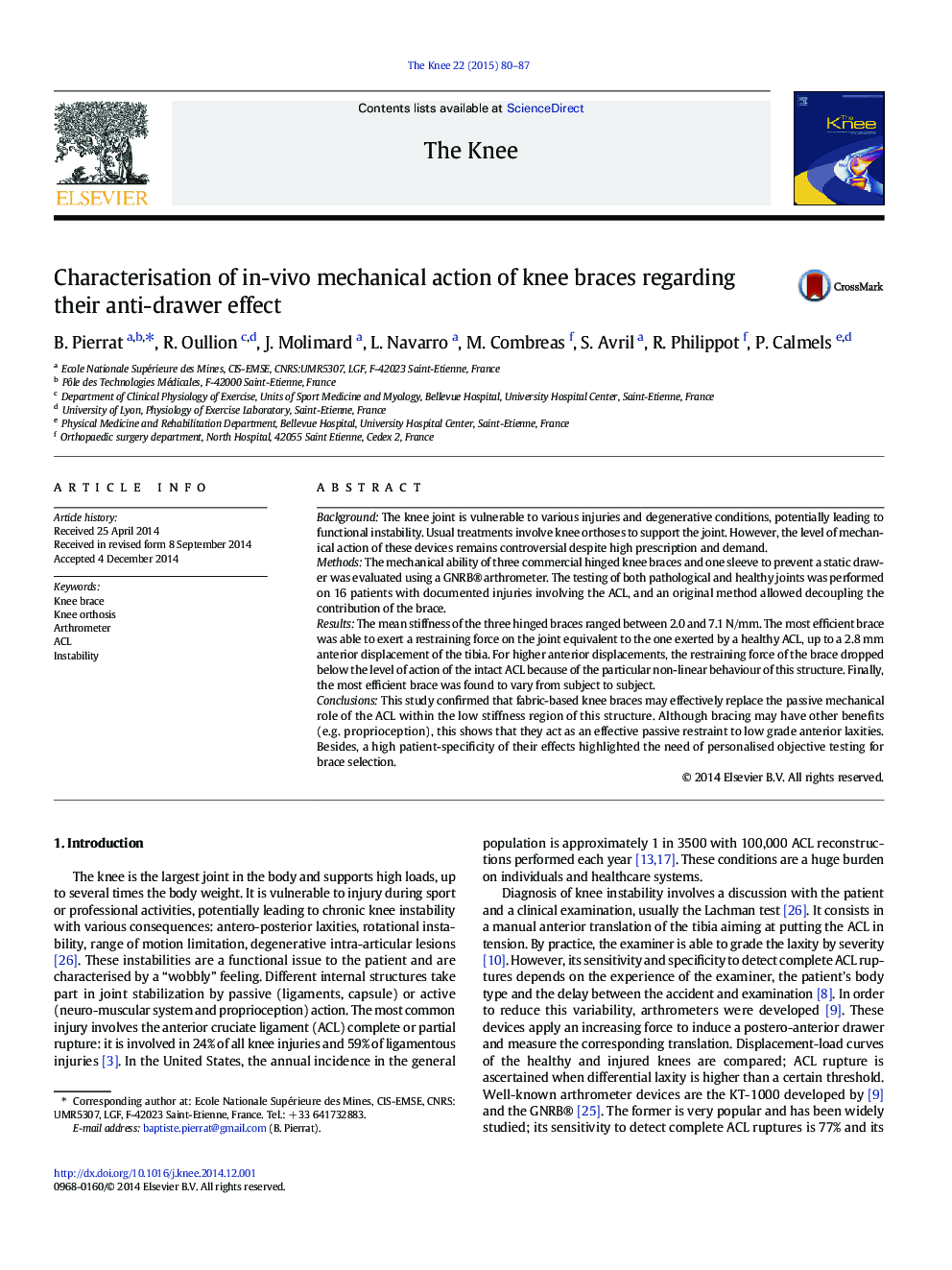| کد مقاله | کد نشریه | سال انتشار | مقاله انگلیسی | نسخه تمام متن |
|---|---|---|---|---|
| 4077393 | 1267216 | 2015 | 8 صفحه PDF | دانلود رایگان |

• The mechanical stabilizing effect of knee braces was evaluated using an arthrometer.
• Pathological and healthy joints were tested on 16 patients with ACL injuries.
• The contribution of each structure (ACL, brace) was decoupled and compared.
• These braces were found to be effective within the low stiffness region of the ACL.
• A high patient-specificity of the measured responses was observed.
BackgroundThe knee joint is vulnerable to various injuries and degenerative conditions, potentially leading to functional instability. Usual treatments involve knee orthoses to support the joint. However, the level of mechanical action of these devices remains controversial despite high prescription and demand.MethodsThe mechanical ability of three commercial hinged knee braces and one sleeve to prevent a static drawer was evaluated using a GNRB® arthrometer. The testing of both pathological and healthy joints was performed on 16 patients with documented injuries involving the ACL, and an original method allowed decoupling the contribution of the brace.ResultsThe mean stiffness of the three hinged braces ranged between 2.0 and 7.1 N/mm. The most efficient brace was able to exert a restraining force on the joint equivalent to the one exerted by a healthy ACL, up to a 2.8 mm anterior displacement of the tibia. For higher anterior displacements, the restraining force of the brace dropped below the level of action of the intact ACL because of the particular non-linear behaviour of this structure. Finally, the most efficient brace was found to vary from subject to subject.ConclusionsThis study confirmed that fabric-based knee braces may effectively replace the passive mechanical role of the ACL within the low stiffness region of this structure. Although bracing may have other benefits (e.g. proprioception), this shows that they act as an effective passive restraint to low grade anterior laxities. Besides, a high patient-specificity of their effects highlighted the need of personalised objective testing for brace selection.
Journal: The Knee - Volume 22, Issue 2, March 2015, Pages 80–87